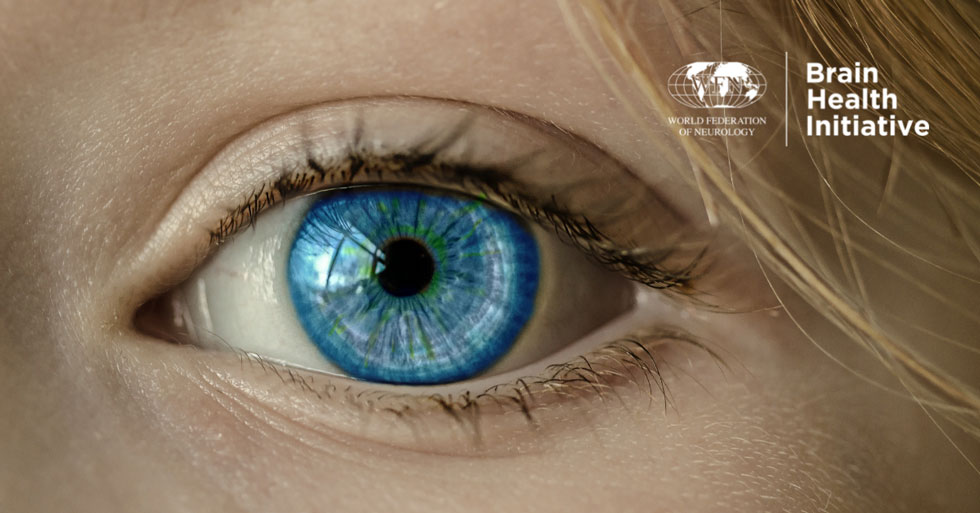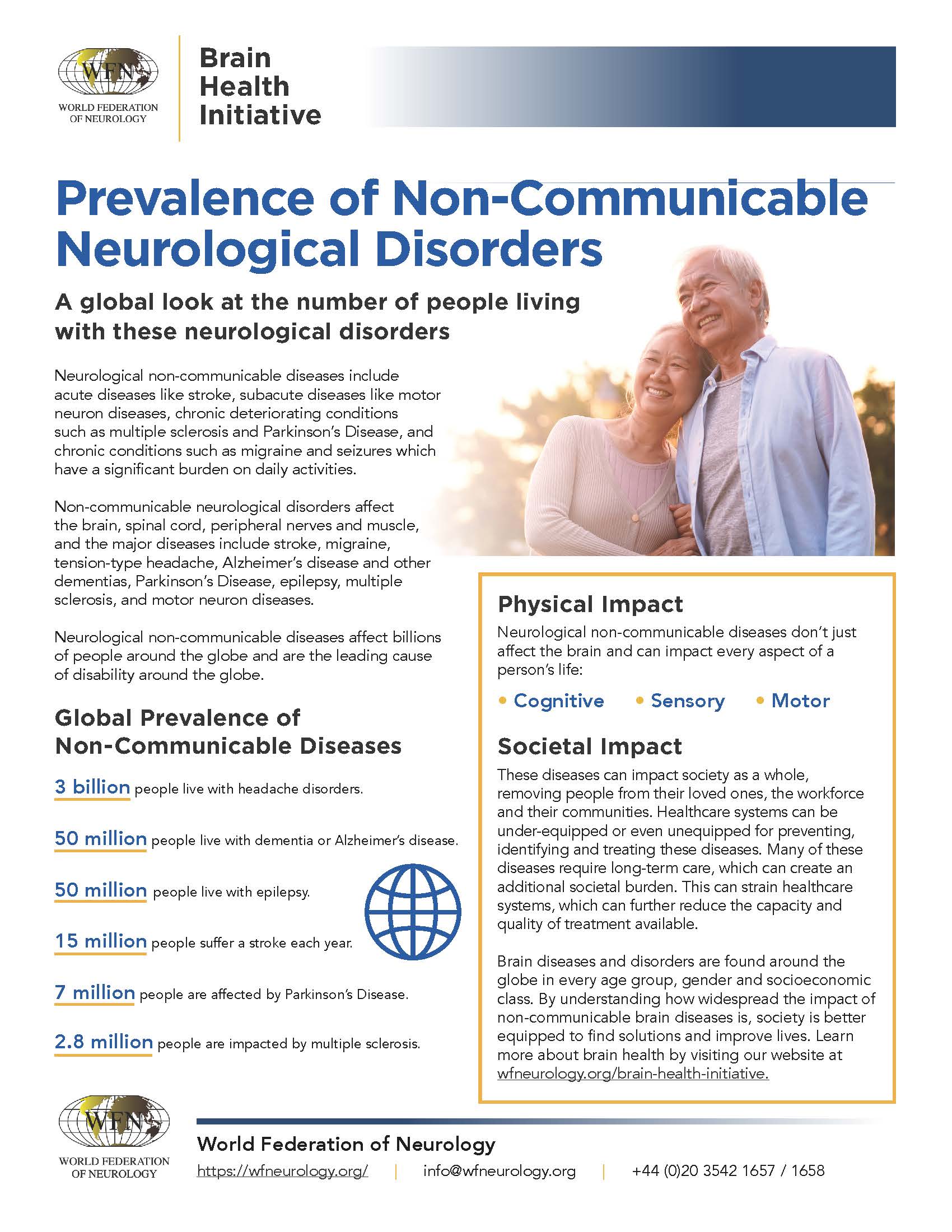What to Know About Non-Communicable Neurological Diseases
How these neurological conditions impact brain health around the world
Neurological non-communicable diseases and disorders are not contagious. They are often characterised by prolonged courses, suboptimal prevention possibilities and incomplete cures. Environmental factors may play a variable role depending on the disease. Non-communicable neurological disorders affect the brain, spinal cord, peripheral nerves and muscle, and the major diseases include stroke, migraine, tension-type headache, Alzheimer’s disease and other dementias, Parkinson’s Disease, chronic recurring diseases like epilepsy and multiple sclerosis, and other motor neuron diseases.
No one is spared from the risk of non-communicable brain diseases, which is why education and prevention are so vital. Here’s what you should know about these diseases.
Non-Communicable Neurological Diseases & Brain Health
Who Is Impacted?
Neurological non-communicable disorders (nNCDs) are the leading cause of disability and the second leading cause of death globally, according to a 2016 global burden of disease study. In the United States, non-communicable neurological diseases affect 14% of the population, and that number is expected to triple by 2050, according to the National Institutes of Health (NIH). That means that nearly four million people in the U.S. will die from or be disabled by nNCDs annually.
Many nNCDs are not confined to high-income countries but are a global issue that causes millions of people to live with neurological impairment or disability.
These diseases and disorders impact people of all ages and genders and do not just impact the elderly. In fact, the age and gender distribution of nNCDs vary depending on the specific disease. For example, both migraine and early-onset multiple sclerosis are more prevalent in women than men. Also, in higher-income countries where people tend to live longer, there are higher prevalence rates for nNCDs that tend to affect older persons, such as stroke, dementia and Parkinson’s Disease.
Regardless of age or gender, nNCDs can be disabling for the person living with the disease and almost equally as devastating for their caregivers. Physical and cognitive impairment are the symptoms of many nNCDS and impact the ability to function independently, care for their families and for themselves. In addition to neurological impairment and disability resulting in dependency, a cycle of emotional and economic strain can also adversely impact the entire family unit.
These diseases do not only impact individuals and families, but can impact society as a whole. Healthcare systems can be under-equipped or even unequipped for preventing, identifying and treating these diseases. Many of these diseases require long-term care, which can strain healthcare systems, further reducing the capacity and quality of treatment available.
Productivity lost due to the impact of brain disease is quantified in a standardised metric known as Disability Adjusted Life Years (DALY), which represents the sum of the years of life lived with a disability (YLD) and the years of life lost (YLL) through premature death. The Global Burden of Disease study published in The Lancet (2016) found that nNCDs were the leading cause of DALYs and the second leading cause of death around the globe. The nNCDs that contributed most to this burden were stroke, migraine, Alzheimer’s disease and other dementias.
Are Neurological NCDs Preventable?For many of these nNCDs, there are multiple risk factors that must be taken into consideration. Some risk factors cannot be controlled, such as age, gender, race and genetics. For some nNCDs, environmental factors play a contributing role—including air pollution, access to clean water and exposure to industrial chemicals—many of which are out of an individual’s control. The World Health Organization (WHO) recommends wherever possible to reduce or avoid hypertension (raised blood pressure), obesity, hypercholesterolemia (raised blood cholesterol), diabetes (elevated glucose levels). The WHO encourages a balanced diet (low salt), regular physical exercise, and sleep. Maintaining and or improving overall health will benefit brain health. |
The Need for Dedicated Resources
It is safe to say that most people will be affected by nNCDs in some way during their lifetime, leaving many of them with varying levels of disability. As the leading cause of disability and the second leading cause of death globally, nNCDs need more investment in research to provide better preventive measures, discover more effective treatments and develop cures. The 2016 global burden of disease study allows for extrapolation of the burden of nNCDs over the next several decades, including an anticipated increase in prevalence of nNCDs. For example, Alzheimer’s disease is expected to go from the 16th leading cause of death in 2016 to the 6th in 2040. To plan appropriately for this increase, we need concerted local, regional and national action.
Public health initiatives, such as smoking prevention campaigns or information to help decrease salt consumption, can have profound effects, yet there is more to be done. Through public health education and advocacy, people all over the world can work to reduce the global burden of neurological disease.
Understanding and caring for brain health is central to the mission of the World Federation of Neurology and the Brain Health Initiative aims to explain about the different aspects of neurological health.
Want to learn more about the prevalence of non-communicable neurological disorders?
Download our guide on the Prevalence of Non-Communicable Neurological Disorders.









